184 Blu-ray / Auryn’s Haydn: op. 55
3 reviews for 184 Blu-ray / Auryn’s Haydn: op. 55
Füge deine Bewertung hinzu
You must be logged in to post a review.
Ähnliche Produkte
-
069Einwilligung verwalten
Um Ihnen ein optimales Erlebnis zu bieten, verwenden wir Technologien wie Cookies, um Geräteinformationen zu speichern und/oder darauf zuzugreifen. Wenn Sie diesen Technologien zustimmen, können wir Daten wie das Surfverhalten oder eindeutige IDs auf dieser Website verarbeiten. Wenn Sie Ihre Einwillligung nicht erteilen oder zurückziehen, können bestimmte Merkmale und Funktionen beeinträchtigt werden.
Funktional Always active
Die technische Speicherung oder der Zugang ist unbedingt erforderlich für den rechtmäßigen Zweck, die Nutzung eines bestimmten Dienstes zu ermöglichen, der vom Teilnehmer oder Nutzer ausdrücklich gewünscht wird, oder für den alleinigen Zweck, die Übertragung einer Nachricht über ein elektronisches Kommunikationsnetz durchzuführen.Präferenzen
Die technische Speicherung oder der Zugriff ist für den rechtmäßigen Zweck der Speicherung von Präferenzen erforderlich, die nicht vom Abonnenten oder Benutzer angefordert wurden.Statistiken
Die technische Speicherung oder der Zugriff, der ausschließlich zu statistischen Zwecken erfolgt. Die technische Speicherung oder der Zugriff, der ausschließlich zu anonymen statistischen Zwecken verwendet wird. Ohne eine Vorladung, die freiwillige Zustimmung deines Internetdienstanbieters oder zusätzliche Aufzeichnungen von Dritten können die zu diesem Zweck gespeicherten oder abgerufenen Informationen allein in der Regel nicht dazu verwendet werden, dich zu identifizieren.Marketing
Die technische Speicherung oder der Zugriff ist erforderlich, um Nutzerprofile zu erstellen, um Werbung zu versenden oder um den Nutzer auf einer Website oder über mehrere Websites hinweg zu ähnlichen Marketingzwecken zu verfolgen.

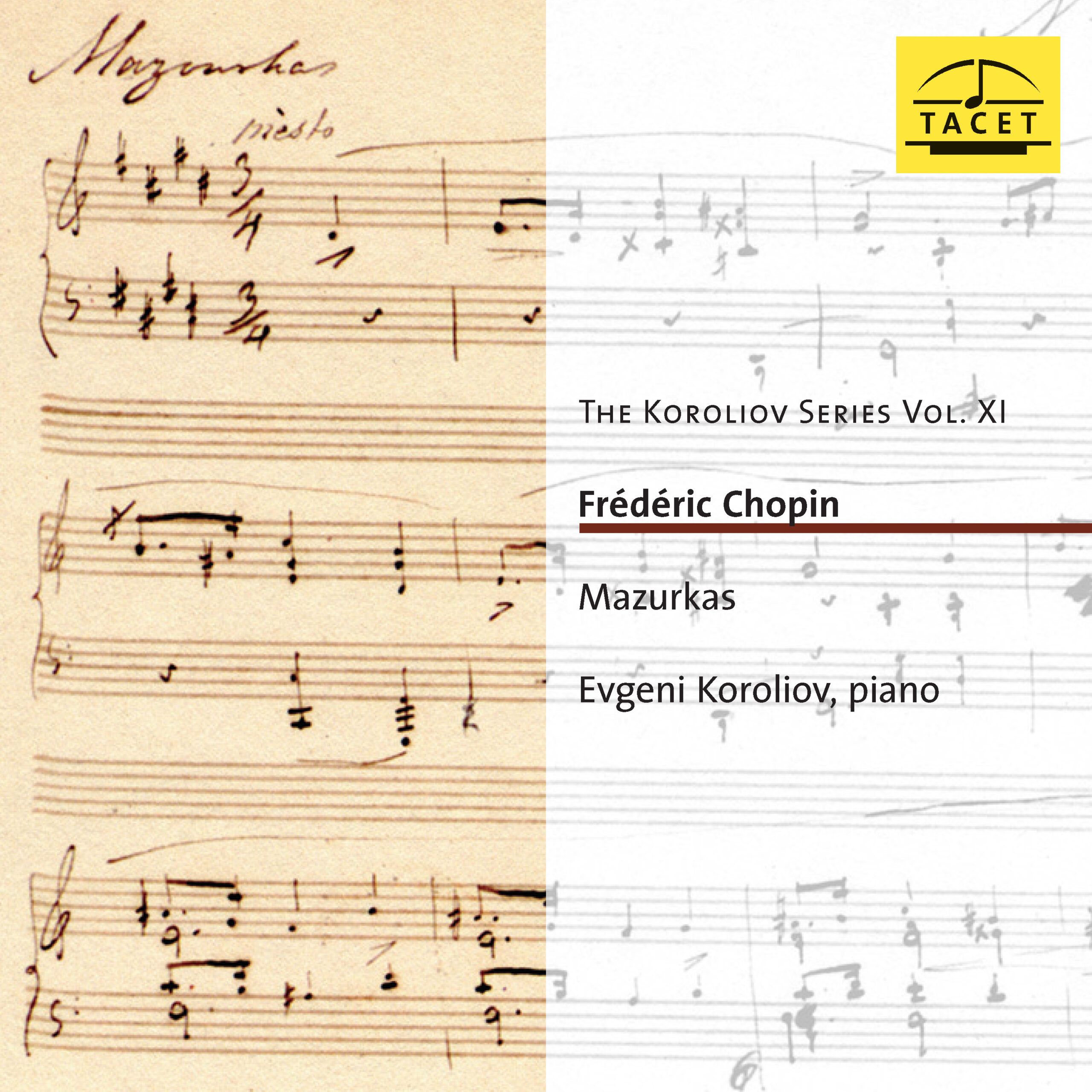
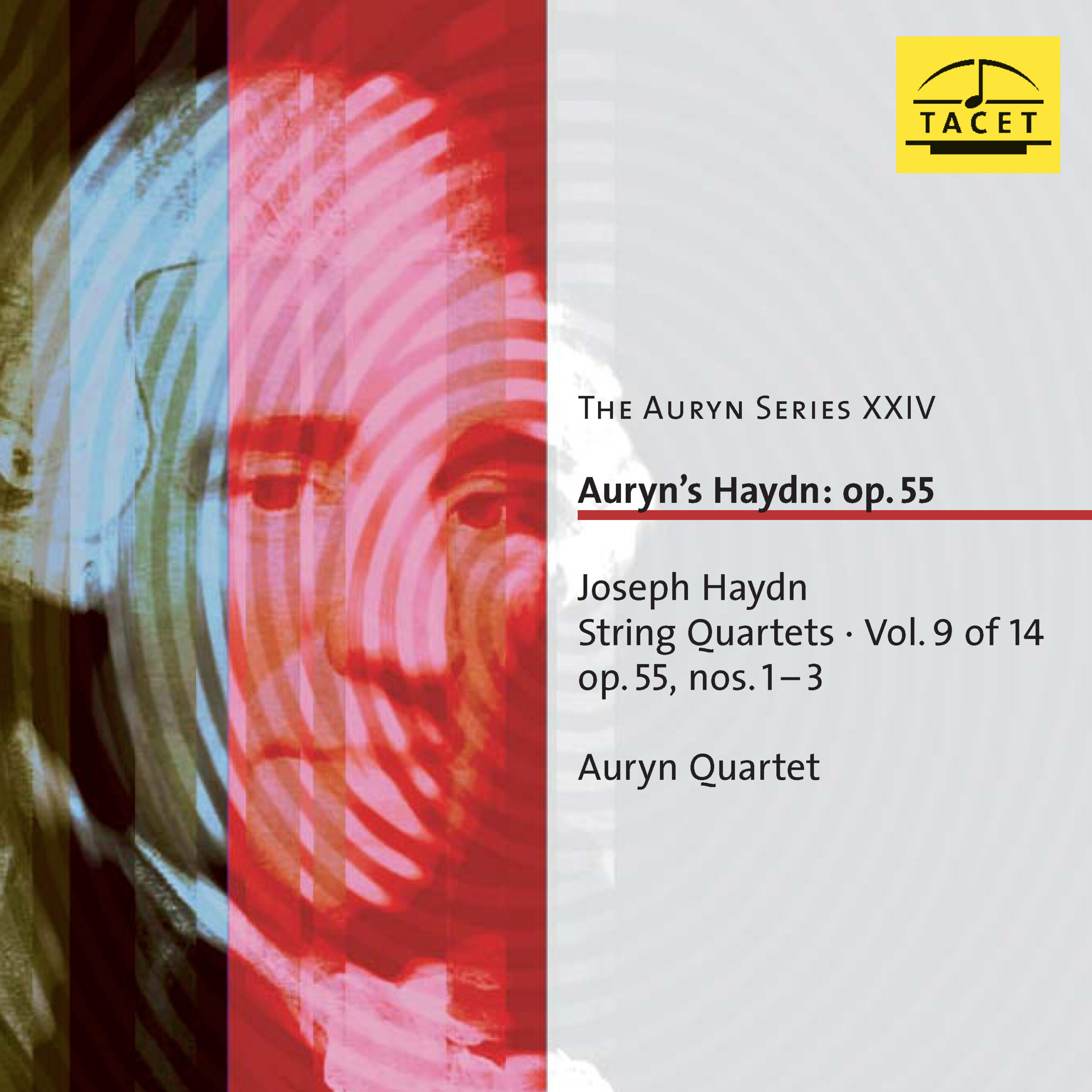
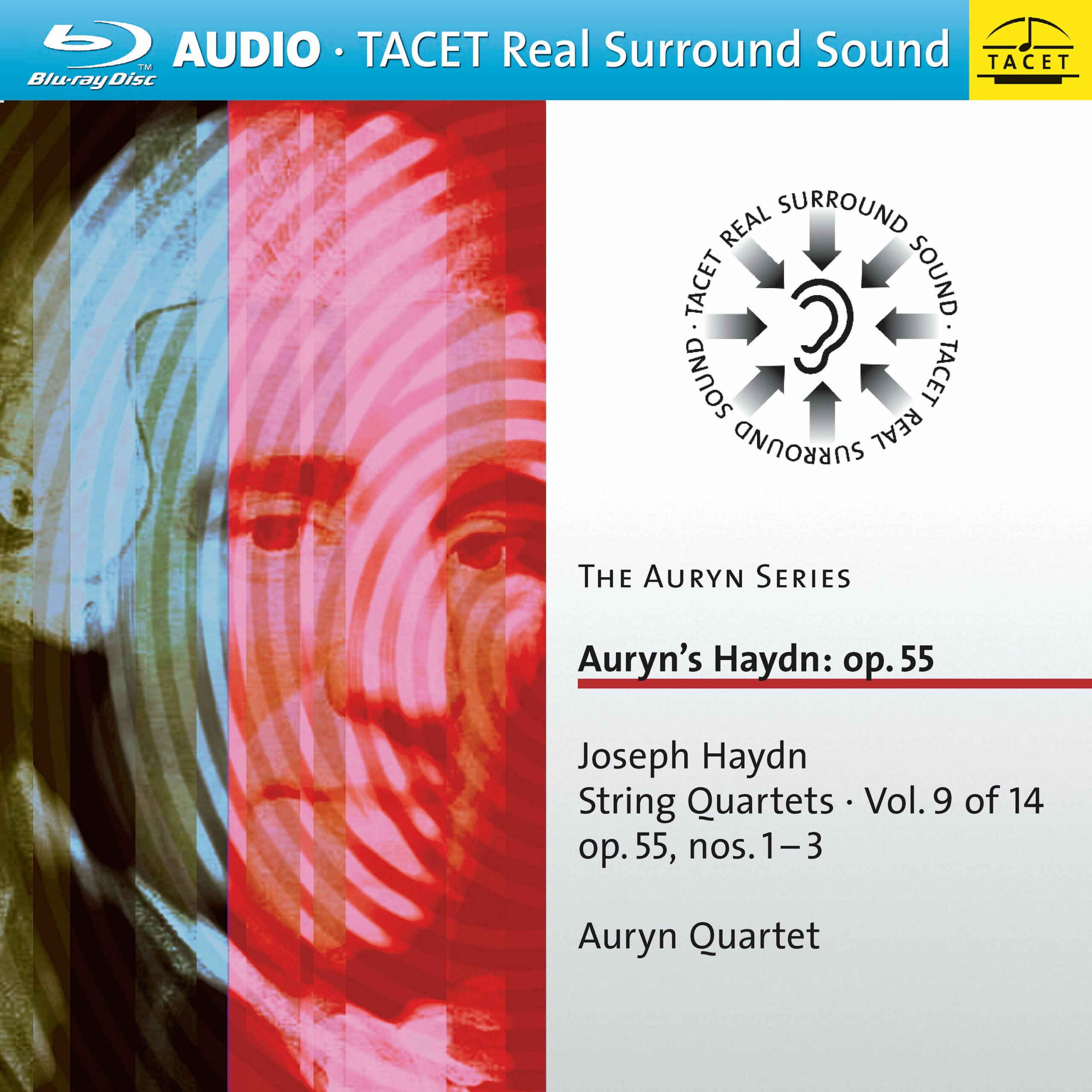
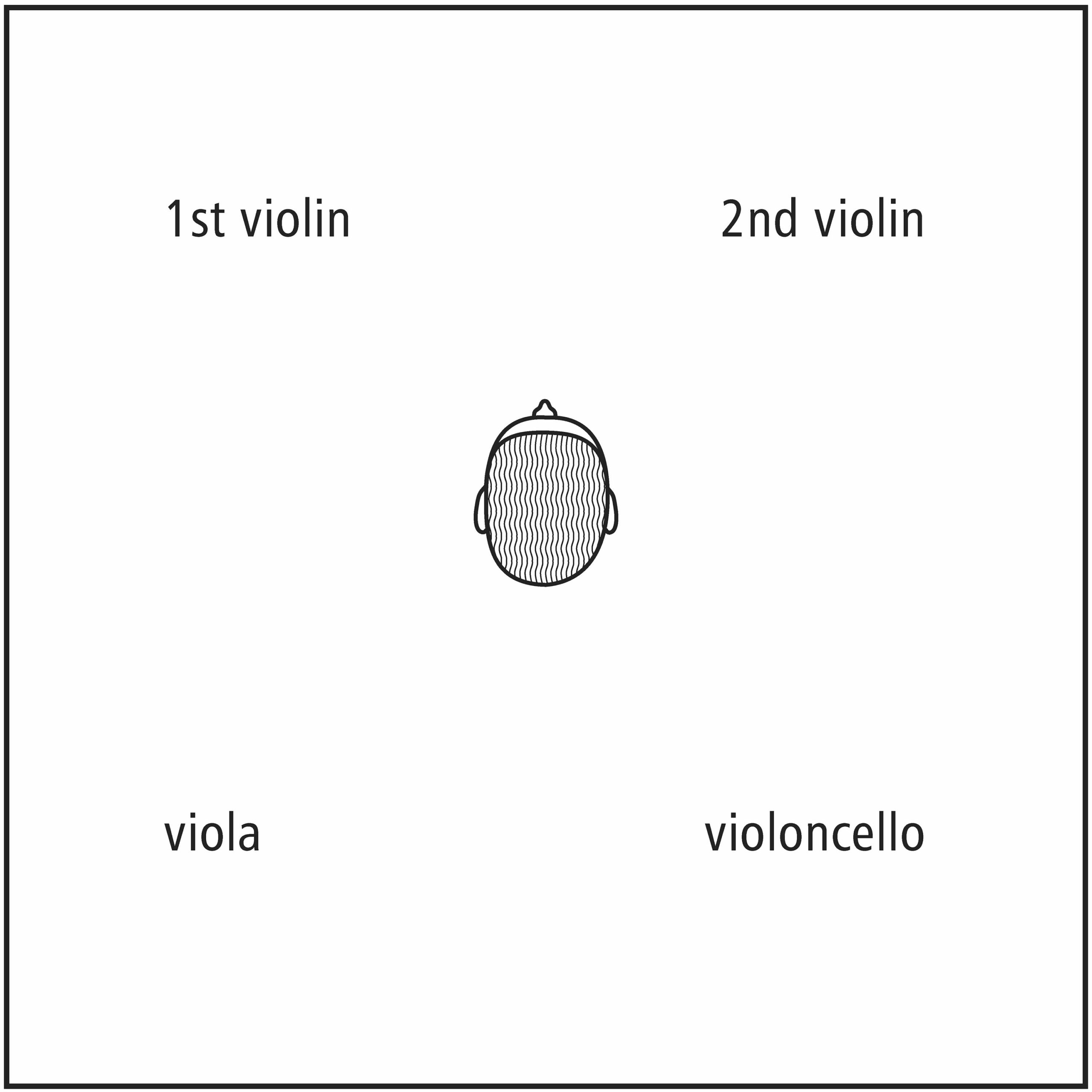
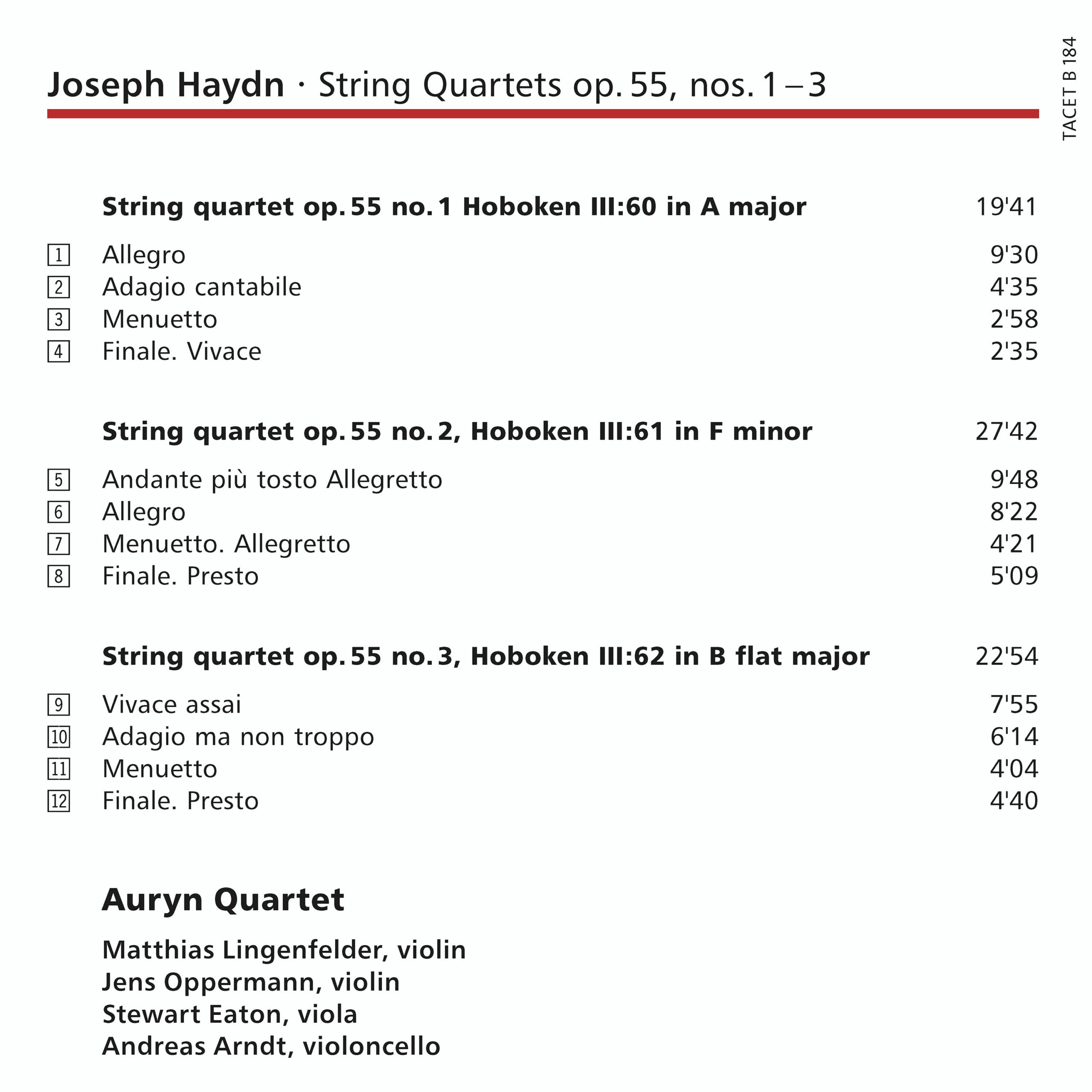
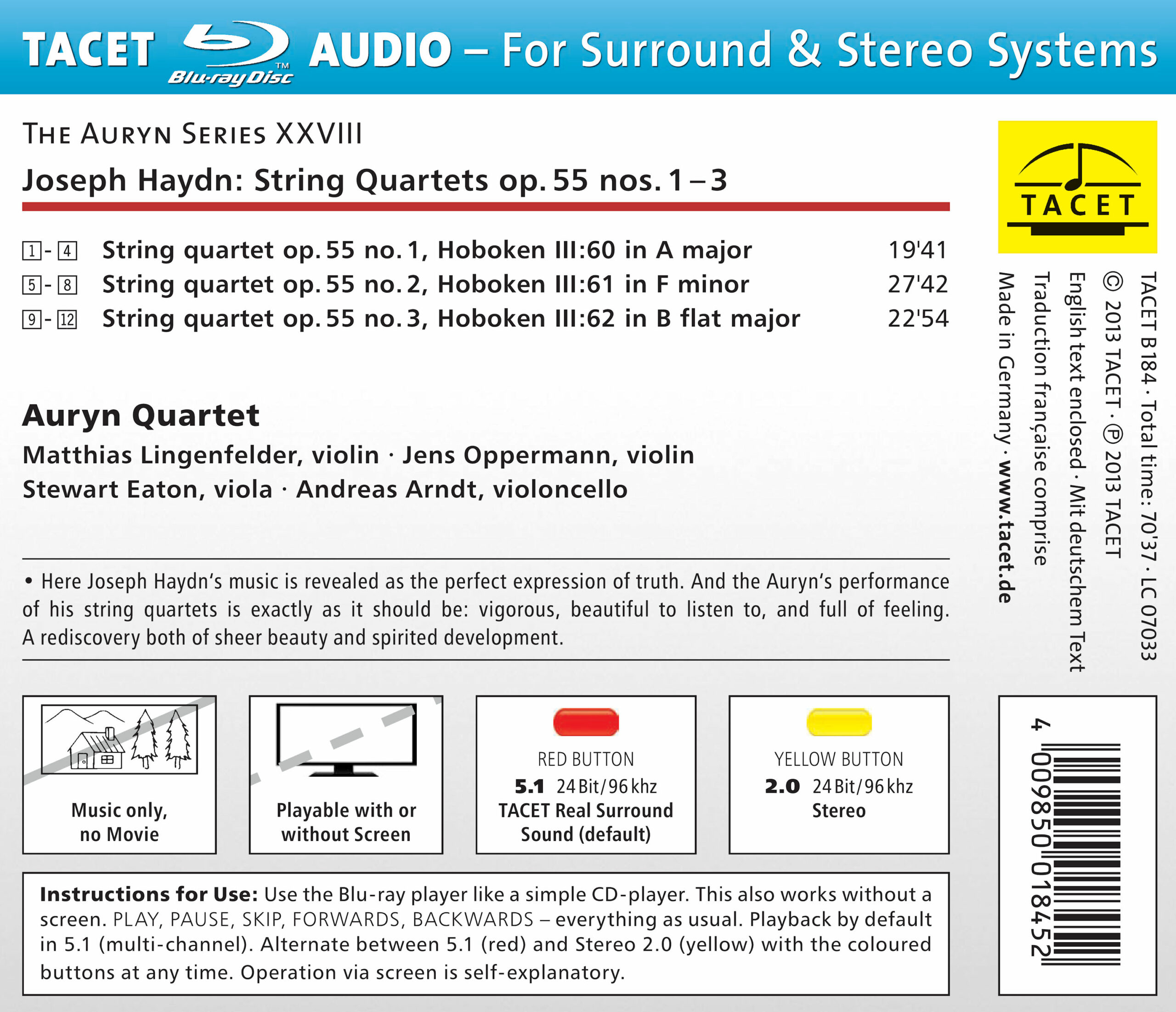
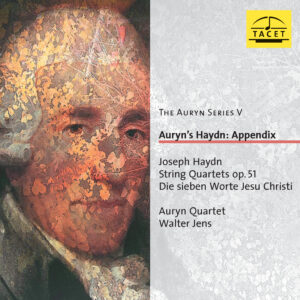
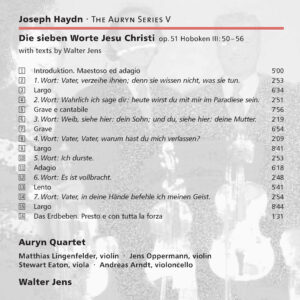
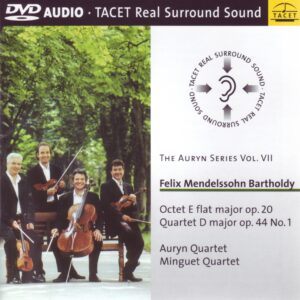
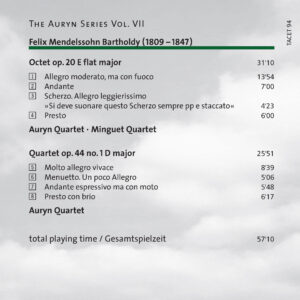
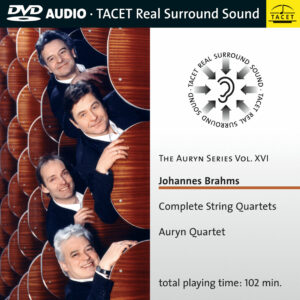
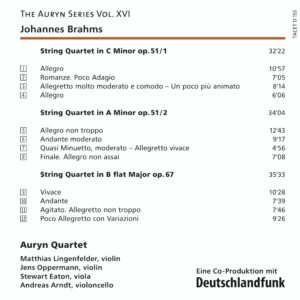
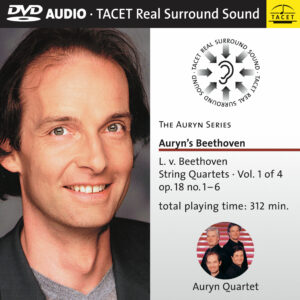
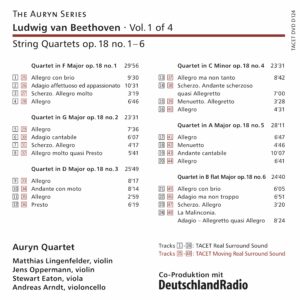
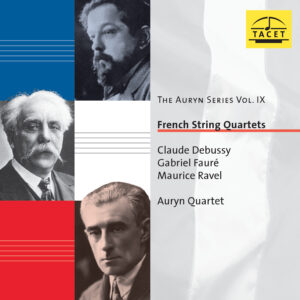
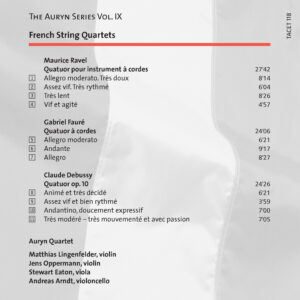
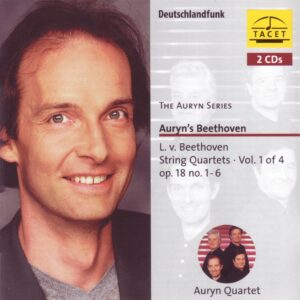
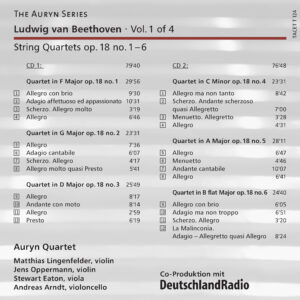
sa-cd.net –
--> original reviewPublished here with kind permission of sa-cd.net and John Broggio.
This set of the second group of "Tost" quartets is my first encounter with the Auryn's & I am mightily impressed and looking forward to reviewing the remainder of this cycle as they become available in the UK on BD.
Firstly, the virtuosity required from all players is worn very lightly indeed; not that the Auryn players make the music sound easy but the the difficulties are carefully integrated into the musical argument (as surely must have been Haydn's wish). Also, the tempo chosen for the opening quartet in A major is wonderfully judged for there is not a moment where the tension drags nor does it ever feel rushed; there are obviously other ways to approach this movement but when one is listening, it sounds like perfection. The Adagio cantabile is also very refreshing in the lack of mannerisms foisted upon it. One should not be mistaken that this is HIP purity (there is plenty of vibrato on display when the Auryn's judge it to be beneficial) but that it sounds completely spontaneous & as if discovering the music for the first time - this is clearly a very well rehearsed spontaneity though!
The Menuet & Trio is (fortunately) a far cry from "traditional" Classical performance, if not quite as lively as some on period instruments this is (just in the Trio) taken at a "one in a bar" speed which gives a lovely lilt & grace to the music. The finale is taken at just the right speed as well: fast enough to be exciting but never remotely feeling as though it is driven.
The next quartet (the "Razor") opens with it's "slow" movement; in the Auryn's hands, this is rightly allowed to flow but they still find space for all the dotted rhythm's to be carefully articulated and as the variations progress, the decorative passage work brings to mind early attempts of Beethoven. The central Allegro is played in such a way that it points up the volatility of the music; a wide dynamic range is employed to frequently startle the unsuspecting listener. The Menuetto is once again nicely judged and the Finale takes the breath away with the "turn on a dime" changes of dynamic and mood that the Auryn Quartet so vividly convey. As ever, even in the most tricky moments, this is not playing for a beautiful surface (although they do achieve that) but one for the heart of the musical argument and there is no small amount of Haydn's humour reflected here.
The final quartet on the disc is less remarkable musically than certainly the central "Razor" quartet but the Auryn quartet play as though it were not the case. Although arguably as fresh in their response to the opening quartet, this is still fine playing that retains all the previous enunciated virtues.
The recording is also fully equal to the playing and, not for the first time, the decision to disperse the players around the listener pays enormous dividends because the clarity of the fastest textures is greatly enhanced and the passages where fragments are thrown around the quartet become as dizzying to hear as they must to co-ordinate at this speed.
Highly recommended.
Copyright © 2014 John Broggio und SA-CD.net
Sächsische Zeitung Dresden –
Right in the middle there instead of just
How can music be brought even closer to listeners? TACET is the German record company that most persistently experiments with all kinds of sound discs. In addition to stereo media CD and LP, the audiophile label offers SACD, DVD-Audio, and Blu-ray Audio with multichannel surround recordings. The Blu-ray is used on the home theater system and allows a choice between two-channel and six-channel versions. It has space for about two and a half hours of music. The screen shows only the tracklist, so it can remain dark. However, the music fills the room in an unprecedented way. Following Mozart with the wind serenade known as "Gran Partita" and Ravel including Bolero, Pavane, and Tzigane, TACET now presents the multi-award-winning cycle of Haydn's string quartets. The latest release includes the six masterpieces of Opus 76, including the so-called Emperor Quartet: The listener sits between the instruments, with the violins in front, viola and cello behind. Unless, of course, the listener turns around. Here, the customer is literally an emperor.
Jens Sommerschuh
Audiophile Audition –
--> original review
Mel Martin covered the first Blu-ray issue of these quartets recently. He mentioned that although ostensibly in 5.1 surround, only four speakers were actually used; I find that to be the case here as well, with each instrument assigned a separate—but not totally discrete—channel. There is a slight degree of spillover from each instrument into its neighbor’s space, making the experience far more holistic than say, those Istomin-Stern-Rose recordings on Columbia from the 1960s where the stereo channels seem completely blocked off from one another. (Actually they weren’t, it’s just that the miking was so close to each instrument that the effect was such.)
Martin also indicated that his four speakers were uneven in strength, the back ones smaller in size and “punch”. That is my setup as well, though I must confess that I am not noticing any corresponding lessening of volume from the cello and viola in the back of the room. Those lower instruments don’t have as much ability as the violins to dominate a sound spectrum anyway, so the resulting total sound balance appears to me as natural and as idiomatic a quartet sound as you might want. Of course, surround sound with four-speaker dispersion in strings is most decidedly not a natural sound—you would not hear it this way in a concert hall. But who cares? The feeling of being smack dab in the middle of a quartet is not an unpleasant one by any means, and there are no dictates handed down from on high that say any particular spatial setup is axiomatic to the enjoyment of these works. We know from history that orchestras and chamber ensembles organized themselves spatially in any number of ways, and Tacet’s proposals do nothing but add to the pleasure received in a fine surround sound experience.
Since I first came into contact with this series some years ago I have regarded it as among the best, perhaps even the best of the modern Haydn quartet recordings. Some are already on DVD-Audio (due partly to the longer playing times vs. SACD), and now the foray into Blu-ray makes them even more interesting, apart from the standard CD issues. Whether this lasts or not, we shall see—some of the majors such as Universal are starting to try this format as well, I guess hoping that the increasing number of Blu-ray players maybe will allow some further saturation of this niche market to penetrate previously impenetrable marketing segments. But the major labels are extraordinarily fickle about such things, their commitment surface-level only, so time will tell. Tacet is not a major label, but is a major player, and one hopes that their commitment to fine quality sound will not wane. These issues are a good sign.
Was die Interpretationen betrifft, so sind beide hier besprochenen Discs hervorragend. Volume 9 umfasst die zweite Dreiergruppe aus den Opus 54 und 55 Quartetten – wobei die erste Gruppe überwiegend in Kreuztonarten steht, die zweite eher in B-Tonarten. Das zentrale Werk ist das berühmte „Rasiermesser“-Quartett, benannt nach Haydns scherzhafter Bemerkung, er würde sein bestes Quartett gegen ein gutes englisches Rasiermesser eintauschen – woraufhin ein gewisser Mr. Bland ihm tatsächlich eines besorgte. Tatsächlich erhielt Haydn das Rasiermesser aber per Post. Dieses Quartett, das 1788 entstand, ist zweifellos sein bis dahin größtes: voller Sturm und Drang, das einzige in Moll (f-Moll) innerhalb des Sets – ein wirklich einprägsames Werk. Angesichts von Haydns umfangreichem und hochwertigem Kammermusikschaffen ist das eine bemerkenswerte Feststellung. Die beiden anderen Quartette sind stilistisch leichter und von heiterem Charakter, jedoch nicht weniger brillant.
The last volume, No. 14, ends with a mélange of quartets that haven’t always fit into the more conventional schemas. The D-minor Op. 42, was composed in 1785 as a single commission, and though the piece has not proved as popular as those in the standard issue of “six” that Haydn so often created, it is a very complex work, not at all as difficult technically, but highly inventive and very witty. The Op. 76 quartets from 1797 set a high standard indeed—never had the string quartet enjoyed such masterly writing. Haydn was not through though; he intended to continue on with a commission from Prince Franz Joseph Maximilian Lobkowitz for another six, though it became apparent that his health was only going to allow the completion of two, which became his Op. 77. They show nothing of the physical ailments he was suffering at the time, and remain at the pinnacle of quartet writing.
The poignant Op. 103 was started in 1803, and by 1806 it became clear that he did not have the strength to complete the outer movements—only the two inner ones remained. “All my strength is gone; I am old and weak” he said. But his invention was not, and this short work, which he did allow to be published, is his swansong, not only for the quartet genre which he started and perfected, but the last piece of music he would write. Even as he said these words, Beethoven was busy writing his “Razumovsky” Quartets. The student would dovetail from the teacher, continuing the legacy.
As stated, the Auryn are masters at this music and play it with palpable affection and great commitment—you simply can’t do any better.
Steven Ritter